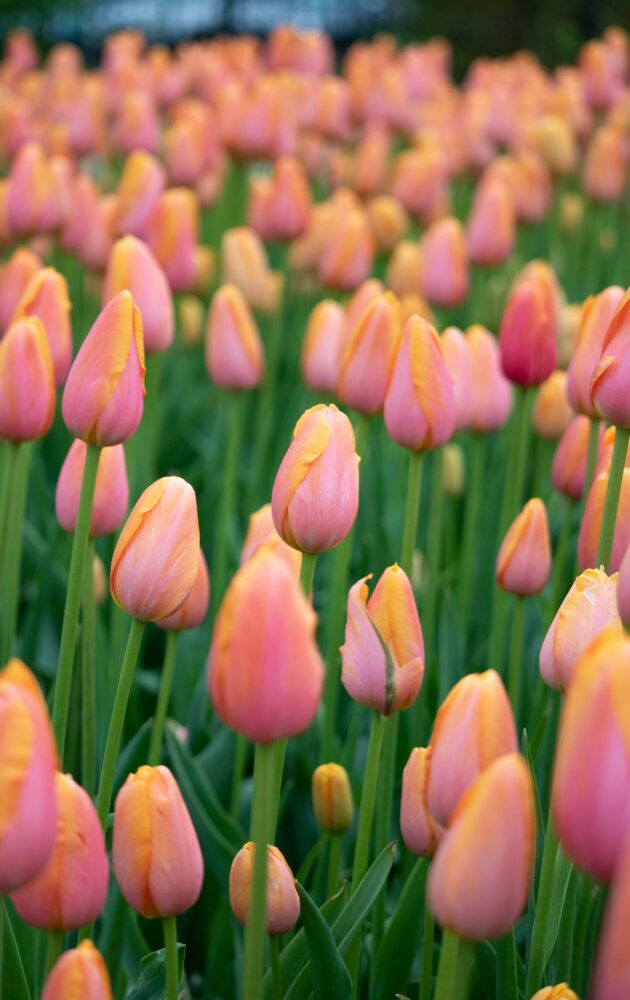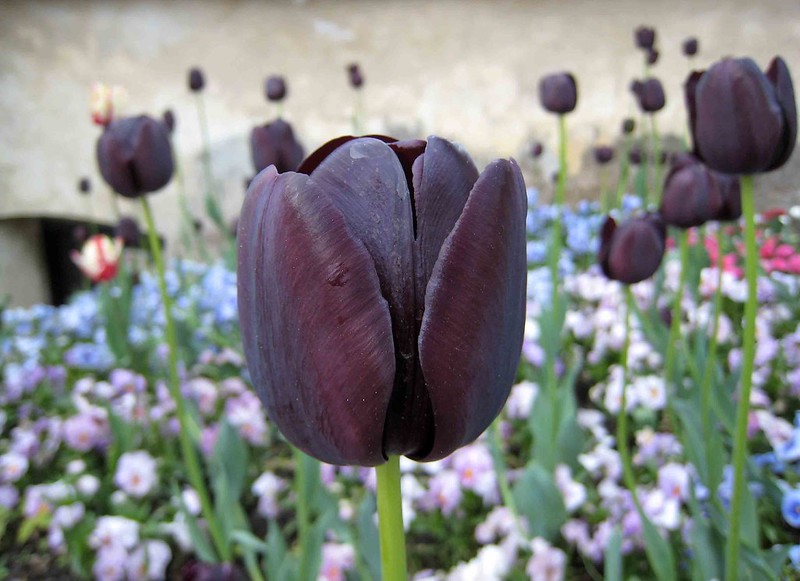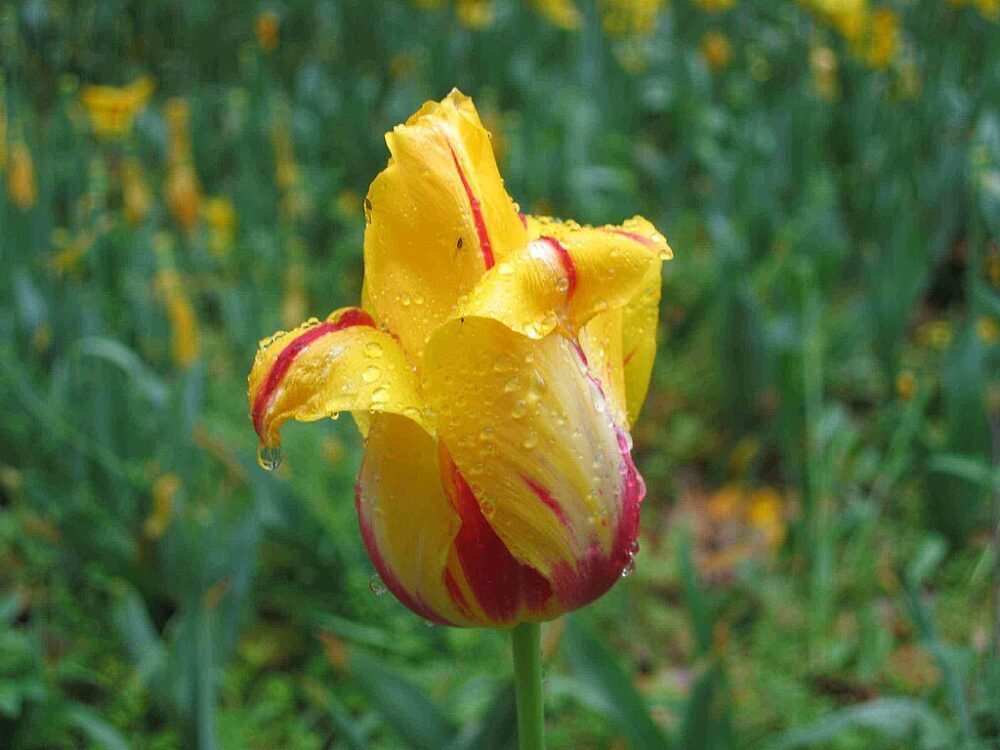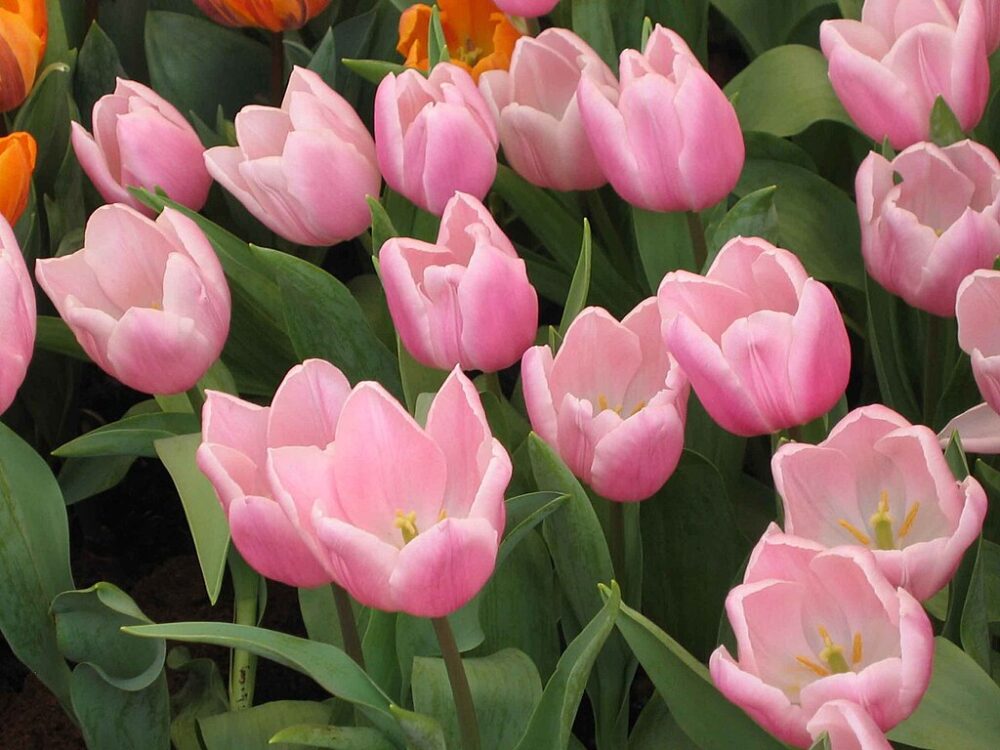April Plant of the Month: Tulips
Spring wouldn't be the same without Tulips! Learn more about these well loved plants, including how to care for them and some varieties to try at home.

A staple flower for over Easter, spring wouldn’t be the same without Tulips. These showy bulbs come in almost every colour imaginable. They are perfect for adding colour to borders in April and May and they also grow very well in pots, so are great if you are tight on space.
Although tulips are technically a perennial, they are frequently planted as annual bulbs. Due to the years of breeding they’ve had to get the best blooms, they often only flower reliably for one year.
Appearance
- Even a novice gardener recognises a Tulip flower. They come in a variety of shapes, heights and colours so there is a Tulip for everyone’s taste.
- From soft pastels to bright vibrant shades, single, or double, the combination options are endless.
- There are thousands of varieties, but they fall into three categories, early flowering, mid-season and late flowering.
- If planned well, your tulip display could last from late March to late May although the time in which your Tulip flowers is very weather dependant.


Where to Plant Them
- Tulips of all types do best in a sunny, sheltered spot in well-drained soil. They can be scattered amongst your flower beds, but it is best to plant tulips just behind perennials in a border as the perennials’ emerging foliage will conceal the leaves of the tulips as they die back.
- For best effect, plant in en masse or in a swathe throughout your bed. Tulips are perfect for a spring display in pots as you can plant them closer together than you would in a planting bed.
- Tulips combine wonderfully with other spring bulbs and other early flowering perennials, such as Narcissus, forget-me-nots, Tiarella, Wallflowers, the fresh leaves of Hostas, low growing Hebes, or Alchemilla mollis.
Pests and Diseases
- Tulip fire is a fungal disease that is particularly bad in wet seasons. Symptoms include distorted and stunted shoots and leaves, and unsightly brown blotches all over the plant.
- If your plants are affected, remove and burn them and avoid planting tulips on the same site for at least two years.
- Planting after the first frost, usually in November, can help reduce the risk of this.
Right: Narcissus ‘Night Queen’


Plant Care
- In autumn, simply plant them at a depth of three times the bulbs’ height, with about 5cm between each one, this can be slightly closer together if planting in a pot.
- Tulips can be kept in the soil all year round to reflower the following year, but you may find they don’t put on such a good display and may be shorter and have smaller flowers.
- It’s important to ensure as much energy as possible from the leaves is returned to the bulbs. Deadhead plants after flowering to stop them wasting energy on producing seed, but don’t cut back foliage until it has turned yellow, which will be about six weeks after flowering.
- Some gardeners prefer to lift and store tulip bulbs rather than leaving them in the ground. This may be the case if you want to plant up your summer pot display. To do this, lift the bulbs once the foliage has turned yellow – a month or so after flowering. Remove the foliage and pull or cut off the stem and remove the flaky outer coating from the bulb. Leave the bulbs to dry and then store in a paper bag in a cool, dry environment.
Left: Tulipa ‘Rembrandt’
Varieties to Consider
- Tulipa ‘Apricot beauty’ (early flowering),
- Darwin hybrids (mid-season) are a reliable perennial variety,
- Tulipa ‘Rembrandt’ (mid -season) is long stemmed with striking stripes in variety of colours,
- Tulipa ‘Ice Cream’ (late season) is an unusual paeony style tulip that resembles an ice cream,
- Tulipa ‘Night queen’ (late season) have a very dark purple bloom which can look very dramatic mixed with white and pale pink.
Some of these varieties are shown in the photos above and right.
Right: Tulipa ‘Apricot beauty’

From planning a new border to a complete garden remodel, we pride ourselves on transforming ideas into beautiful reality, with minimum disruption. If you’re based in or around the Reading and Newbury area, we’d love to meet and discuss your project in detail – book your free no-obligation garden consultation today.
Image Credits
Tulipa ‘Night Queen’; Tulipa ‘Rembrandt’; Tulipa ‘Apricot Beauty’